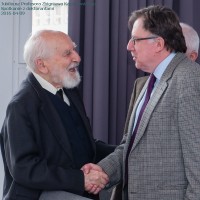|
Optimal internal architectures of femoral bone based on relaxation by homogenization and isotropic material design |
 |
 |
 |
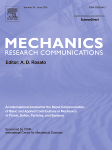 I. Goda, J.F Ganghoffer, S. Czarnecki, P. Wawruch, T. Lewiński I. Goda, J.F Ganghoffer, S. Czarnecki, P. Wawruch, T. Lewiński
Optimal internal architectures of femoral bone based on relaxation by homogenization and isotropic material design
Mechanics Research Communications, DOI:dx.doi.org/10.1016/j.mechrescom.2016.06.007
Read online>>
Abstract
The influence of the loading conditions on the trabecular architecture of a femur is investigated by using topology optimization methods. The response of the bone to physiological loads results in changes of the internal architecture of bone, reflected by a modification of internal effective density and mechanical properties. The homogenization based optimization model is developed for predicting optimal bone density distribution, wherein bone tissue is assumed to be a composite material consisting of a mixture of material and void. The homogenization scheme treats the geometric parameters of the microstructures and their orientation as design variables and homogenizes the properties in that microstructure, which is generally anisotropic. The penalization of the optimal material density then leads to a classical optimal structure which consists of regions with bone material and regions without bone material. The IMD (Isotropic Material Design) approach is next applied to determine the optimal elasticity tensor in terms of the bulk and shear moduli as well for the present loading applied to the femoral bone sample. IMD is able to provide both the external shape and topology together with the optimal layout of the isotropic moduli. Both topology optimization methods appear to be complementary. Simulations of the internal bone architecture of the human proximal femur results in a density distribution pattern with good consistency with that of the real bone. |
|
Simply supported Michell trusses generated by a lateral point load |
 |
 |
 |
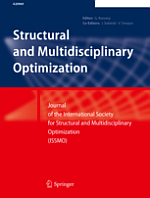 T. Sokół and T. Lewiński: Simply supported Michell trusses generated by a lateral point load. Structural and Multidisciplinary Optimization. (2016) 54:1209–1224, DOI 10.1007/s00158-016-1480-8. T. Sokół and T. Lewiński: Simply supported Michell trusses generated by a lateral point load. Structural and Multidisciplinary Optimization. (2016) 54:1209–1224, DOI 10.1007/s00158-016-1480-8.
Read online>>
Abstract:
The paper deals with the optimum design problem posed by George Rozvany: find the lightest fully stressed truss transmitting a given concentrated force to two supports forming a line parallel to the force. One of the supports is a hinge while the second one is a roller. The feasible domain is a square domain over the line linking the supports. The problem thus formulated belongs to the class of the three force problem, till now unsolved in general. In the problem stated here two of the three forces are mutually orthogonal. The family of solutions to this problem is parameterized by the coordinates of the point of the force application, hence is a two-parameter family. This seemingly simple problem generates a vast family of extremely interesting solutions, some of them being known, some being only partly resolved, while others turn out to be surprising and not resolved till now. The present paper delivers exact solutions to the optimum designs corresponding to the force position being a sufficiently big distance to the line linking the supports. The kinematic and static approaches are used, both leading to the same exact results. Other solutions are constructed numerically by the adaptive ground structure method. |
|
Advances in Mechanics: Theoretical, Computational and Interdisciplinary Issues. |
 |
 |
 |
Advances in Mechanics: Theoretical, Computational and Interdisciplinary Issues. M. Kleiber, T. Burczyński, K. Wilde, J. Górski, K. Winkelmann, Ł. Smakosz (Eds). CRC Press, 2016. ISBN 978-1-138-02906-4
1. K. Bołbotowski & T. Sokół: New method of generating Strut and Tie models using truss topology optimization, pp. 97-100
2. S. Czarnecki & P. Wawruch: Construction of stress trajectories in optimal, non-homogeneous elastic bodies, pp. 137-140
3. T. Łukasiak: HSρ – an isotropic material interpolation scheme based on Hashin-Shtrikman variational bounds, pp. 355-359
4. T. Sokół: A new adaptive ground structure method for multi-load spatial Michell structures, pp. 525-528 |
|
Theoretical Foundations of Civil Engineering, Polish-Ukrainian Transactions, 2015 |
 |
 |
 |
Theoretical Foundations of Civil Engineering, Polish-Ukrainian Transactions, v. 23, ed. W. Szcześniak, Warsaw 2015, ISBN 978-83-7814-500-4
Prace pracowników ZMBiZI:
1. Jubileusz 75-tej rocznicy urodzin Profesora Wacława Szcześniaka, Ataman M.,Kozyra Z., Zbiciak A., pp. 9-22
2. Discretization of random field loads with respect to form analysis, Czmoch I., pp. 71-78
3. Charakterystyki modalne konstrukcji wsporczych linii elekroenergetycznych, Dudziak S., Kozyra Z., pp-79-88
4. Izotropowe kompozyty periodyczne modelowane laminatami ortogonalnymi, Łukasiak T., pp. 121-128
5. Modelowanie cięgna nierozciągliwego w programie ABAQUS, Wójcik-Grząba I., Dzierżanowski G., pp. 173-181
|
|
95 lat Profesora Zbigniewa Kączkowskiego |
 |
 |
 |

Spotkanie z doktorantami
Prof. dr inż. Zbigniew Kączkowski >> w dniu 10 kwietnia 2016 skończył 95 lat. Z okazji jubileuszu spotkał się ze swoimi doktorantami. Profesor wypromował 24 doktorantów (lista doktorantów ). Profesor Kączkowski pierwszego doktoranta wypromował w roku 1959, ostatniego w roku 1991. ). Profesor Kączkowski pierwszego doktoranta wypromował w roku 1959, ostatniego w roku 1991.
Doktoranci przygotowali list  , który został odczytany i wręczony Jubilatowi. , który został odczytany i wręczony Jubilatowi.
Główna część spotkania poświęcona była omówieniu wszystkich 24 doktoratów. Profesor, jak zawsze, świetnie przygotowany wspominał doktoraty i doktorantów. Szczególnie gorąco wspominaliśmy doktorantów, którzy już nie żyją. Kilku doktorantów, ze względu na sędziwy wiek, nie mogło przyjechać. Franciszek Jarzyński, doktorat obroniony w roku 1964, w tym roku kończy 100 lat!
Jubileusz zakończył się obietnicą kolejnego spotkania za 5 lat - na 100 lecie urodzin Profesora.
Zbigniew Kacprzyk
Galeria zdjęć:
|
|
Komputerowe wspomaganie projektowania konstrukcji: od CAD 2D do BIM |
 |
 |
 |
 Komputerowe wspomaganie projektowania konstrukcji: od CAD 2D do BIM Komputerowe wspomaganie projektowania konstrukcji: od CAD 2D do BIM
Z. Kacprzyk
Budownictwo i Prawo, 1/2016 (77), s. 26-34
W pracy dokonano przeglądu komputeryzacji projektowania konstrukcji. Omówiono projektowanie 2D i 3D. Przeanalizowano zalety i wady poszczególnych typów projektowania.
Zwrócono uwagę, że sporządzanie dokumentacja 2D, dominującej obecnie w biurach projektów, nie doczekało się jakichkolwiek uregulowań prawnych sankcjonujących jej postać elektroniczną.
W przyszłości prawdopodobnie dominujące będzie projektowanie 3D. Wadą projektowania 3D są koszty na wstępnym etapie wdrażania nowej technologii: drogie, zaawansowane stacje robocze z drogim oprogramowaniem i czasochłonne szkolenie projektantów.
Powszechnie stosowane obliczenia konstrukcji inżynierskich są obecnie, dzięki oprogramowaniu, stosunkowo proste i nie wymagają dużej wiedzy od użytkownika. Dużą wadą obliczeń komputerowych jest trudność ich weryfikacji. Obliczenia komputerowe, podobnie jak modelowanie geometryczne, wymaga wprowadzenia standardów.
|
|
|
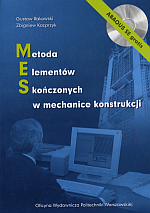





 I. Goda, J.F Ganghoffer, S. Czarnecki, P. Wawruch, T. Lewiński
I. Goda, J.F Ganghoffer, S. Czarnecki, P. Wawruch, T. Lewiński T. Sokół and T. Lewiński: Simply supported Michell trusses generated by a lateral point load. Structural and Multidisciplinary Optimization. (2016) 54:1209–1224, DOI 10.1007/s00158-016-1480-8.
T. Sokół and T. Lewiński: Simply supported Michell trusses generated by a lateral point load. Structural and Multidisciplinary Optimization. (2016) 54:1209–1224, DOI 10.1007/s00158-016-1480-8.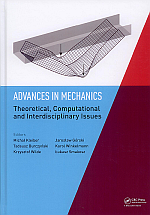
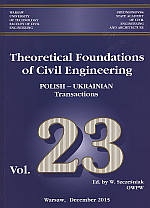 Theoretical Foundations of Civil Engineering, Polish-Ukrainian Transactions, v. 23, ed. W. Szcześniak, Warsaw 2015, ISBN 978-83-7814-500-4
Theoretical Foundations of Civil Engineering, Polish-Ukrainian Transactions, v. 23, ed. W. Szcześniak, Warsaw 2015, ISBN 978-83-7814-500-4

 Komputerowe wspomaganie projektowania konstrukcji: od CAD 2D do BIM
Komputerowe wspomaganie projektowania konstrukcji: od CAD 2D do BIM